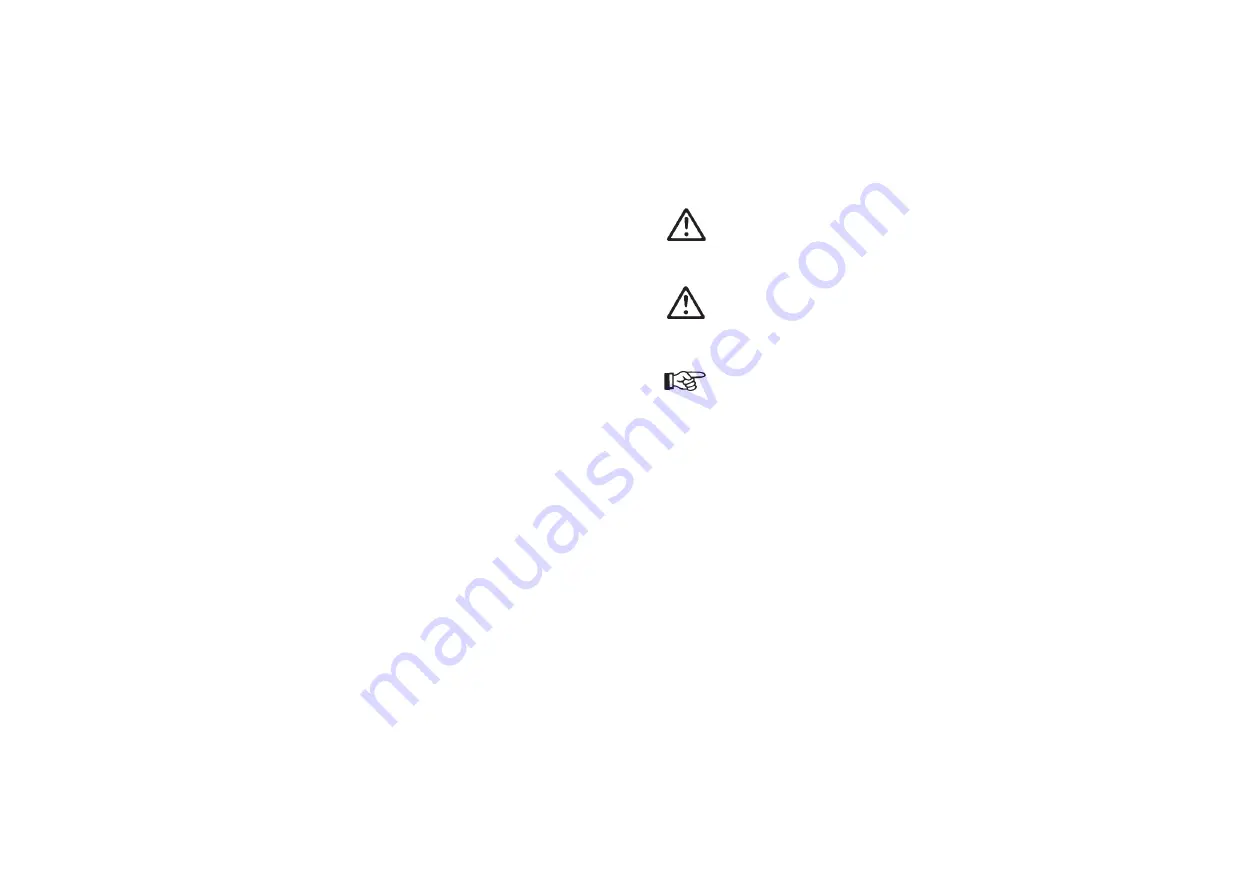
28
29
The equipment may be used in potentially explosive atmospheres only with the autho-
risation of the relevant supervisory authority.
The relevant supervisory authority or the operator of the equipment are respon-
sible for determining the explosion hazard (zone classification).
The operator must check and ensure that all technical data and the marking of the
equipment in accordance with ATEX are compliant with the necessary requirements.
The operator must provide corresponding safety measures for all applications in
which the breakdown of the equipment might lead to danger to persons.
If any irregularities are observed while the equipment is in operation, the equipment
must be put out of operation immediately and WALTHER Spritz- und Lackiersysteme
must be consulted.
Grounding / Equipotential Bonding
Measures must be taken to ensure that the spray gun is sufficiently grounded
(earthed) by means of a conductive air hose (maximum resistance 10
6
Ω
).
1.3
Improper Use
The spray gun must not be used for purposes other than those laid down in the above
section
1.2 Normal Use
.
Any other form of use is prohibited.
Improper use includes
•
the spraying of material on persons and animals;
•
the use of liquid nitrogen.
2
Technical Description
PILOT Mini:
Manual spray gun for conventional atomisation
Model versions: • with gravity-feed cup
• with material connection
PILOT Mini-MP: Manual spray gun for medium pressure
Model versions: • with gravity-feed cup
• with material connection.
With the PILOT Mini-MP the spraying pressure is from 1.2 to 1.4 bar with an input
pressure of 3.0 to 3.3 bar.
Pulling of the trigger (item 26) is followed by opening of the valve cone (item 7) (initi-
al air input) with subsequent pull-back of the material needle (item 13). Releasing of
the trigger shuts the gun off in reverse order.
The material flow rate depends on the diameter of the nozzle used and on the setting
of the material pressure at the material pressure tank or at the material pressure
regulating control.
The material input volume may also be regulated at the needle adjusting screw
(item 15) by turning it inwards or outwards.
The spray-jet adjuster (item 18) is used to control the spray jet ratio, i.e.
LH-turn (outwards) = flat jet,
RH-turn (inwards) = round jet.
The air volume regulating control (item 17) is used to adjust the atomizing air input.
3
Safety instructions
3.1
Identification of safety instructions
Warning
The pictogram and the urgency level “
Warning
“ identify a possible danger to per-
sons.
Possible consequences: Slight to severe injuries.
Attention
The pictogram and the urgency level “
Attention
“ identify a possible danger to
material assets.
Possible consequences: Damage to material assets.
Note
The pictogram and the urgency level “
Note
“ identify additional information for the
safe and efficient operation of the spray gun.
3.2
General Safety Instructions
All applicable accident prevention rules and regulations as well as other recognised
industrial safety and health rules and regulations must be observed at all times.
Use the spray gun only in well-ventilated rooms. Fire, naked flames and smoking are
strictly prohibited within the working area. WARNING – during the spraying of flam-
mable materials (e.g. lacquers, adhesives, cleaning agents, etc.), there is an
increased risk to health as well as an increased risk of explosion and fire.
Measures must be taken to ensure that the spray gun is sufficiently grounded
(earthed) by means of a conductive air hose (maximum resistance 10
6
Ω
).
Before carrying out maintenance or servicing work, always ensure that the air and
material feed to the spray gun have been depressurised. Risk of injury!
When spraying materials, do not place your hands or other parts of the body in front
of the pressurised nozzle or the spray gun. Risk of injury!
Never point the spray gun at persons or animals. Risk of injury!
Always observe the spraying and safety instructions given by the manufacturers of
the spraying material and the cleaning agent. Aggressive and corrosive materials in
particular can be harmful to health.
Exhaust air containing particles (overspray) must be kept away from the working
area and personnel. In spite of these measures, always wear the regulation brea-
















































